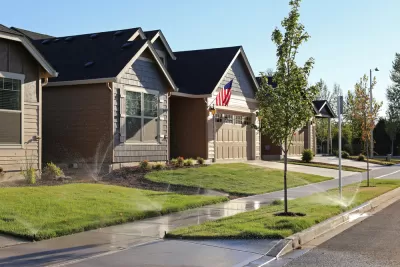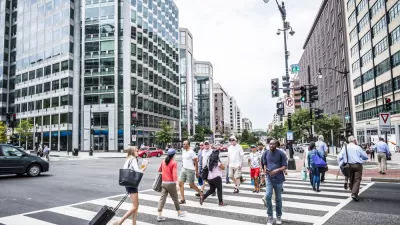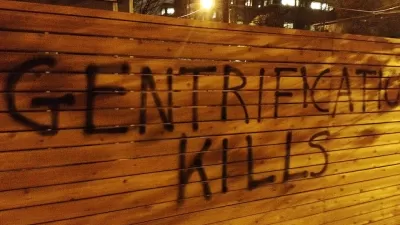Low-income residents have scattered to the periphery, where social services are less accessible.

Aaron Wiener writes in detail about the suburbanization of poverty, focusing on the region around Washington, D.C. as an example of changes underway in cities around the country.
According to Wiener, people growing up in neighborhoods in Washington, D.C. couldn't have imagine how much those places would change—or where those changes would require them to move.
Nobody imagined it, really. Certainly not the original suburbanites, the mostly white pilgrims who fled cities nationwide for peace, safety, space — and sometimes to get away from people who didn’t look like them. Not the federal government, which declared war on poverty in the 1960s but got stuck on an old version of the fight, still targeting low-income clusters in urban centers today rather than the diffusion of people who can no longer afford to live near their work. Not the nonprofit organizations that help low-income populations, which began in the so-called inner city and are largely still there, spending far more money per urban poor person than per suburbanite in need — 10 times as much in the D.C. region.
According to Wiener, low-income residents are leaving downtowns for more suburban locales, where they are "increasingly hidden from public view" and "isolated from the government offices, social services, and networks of friends and relatives on which they once relied." Traditionally wealthy areas, like Montgomery County in Maryland, have seen the fastest increases in poverty while also seeing an influx of non-white residents.
To illustrate the larger societal shift, Wiener follows the story of Delonte Wilkins, a resident of Capital Heights, Maryland, who grew up in the Bloomingdale neighborhood of Northwest Washington, D.C. But the larger story told by the article is about the struggle of non-profits and local jurisdictions to respond to the shifting geography of poverty.
FULL STORY: Poverty is moving to the suburbs. The war on poverty hasn’t followed.

Planetizen Federal Action Tracker
A weekly monitor of how Trump’s orders and actions are impacting planners and planning in America.

Maui's Vacation Rental Debate Turns Ugly
Verbal attacks, misinformation campaigns and fistfights plague a high-stakes debate to convert thousands of vacation rentals into long-term housing.

San Francisco Suspends Traffic Calming Amidst Record Deaths
Citing “a challenging fiscal landscape,” the city will cease the program on the heels of 42 traffic deaths, including 24 pedestrians.

Amtrak Rolls Out New Orleans to Alabama “Mardi Gras” Train
The new service will operate morning and evening departures between Mobile and New Orleans.

The Subversive Car-Free Guide to Trump's Great American Road Trip
Car-free ways to access Chicagoland’s best tourist attractions.

San Antonio and Austin are Fusing Into one Massive Megaregion
The region spanning the two central Texas cities is growing fast, posing challenges for local infrastructure and water supplies.
Urban Design for Planners 1: Software Tools
This six-course series explores essential urban design concepts using open source software and equips planners with the tools they need to participate fully in the urban design process.
Planning for Universal Design
Learn the tools for implementing Universal Design in planning regulations.
Heyer Gruel & Associates PA
JM Goldson LLC
Custer County Colorado
City of Camden Redevelopment Agency
City of Astoria
Transportation Research & Education Center (TREC) at Portland State University
Jefferson Parish Government
Camden Redevelopment Agency
City of Claremont





























